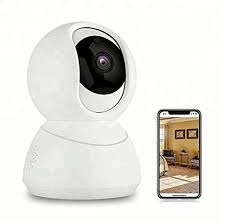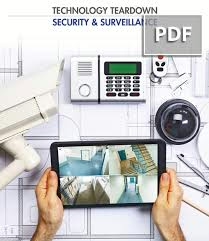Police in Northern Ireland spied on journalists. The review, led by barrister Angus McCullough, looked at actions by the Police Service of Northern Ireland, or PSNI, from 2011 to 2024. It came about after a court case exposed illegal warrants for this kind of spying.
The PSNI hired McCullough to dig into their methods. A recent ruling showed they got warrants the wrong way to track journalists. This sparked the full probe. Such practices raised alarms about press rights in a place with a history of tense police-media ties. Northern Ireland’s past conflicts make leaks a big worry for police, but they must follow rules to protect free speech.
Key results show police took phone numbers from journalists. They used these to scan for leaks from their own officers or workers. The review cleared the PSNI of broad abuse. It found no proof of routine spying on journalists, lawyers, or others with protected roles. These groups get extra care under law to shield their work. Yet, big red flags popped up. Police ran wide sweeps of their internal phone logs. This aimed to spot secret talks between staff and reporters. Such sweeps often skipped key checks, leading to overreach.
The probe uncovered sharp problems in detail. It spotted 21 cases of illegal secret efforts to name journalists’ sources. Sources are people who tip off reporters; exposing them can chill free press. In one case, a journalist faced spying without the right okay. A lawyer endured it too, twice. One time, it happened right in a court house, a spot meant to be safe from such intrusion. These acts broke privacy laws meant to guard professional talks. Readers might wonder why this matters. Well, it risks trust between police and public, especially when leaks involve sensitive info like officer misconduct.
Police stopped these risky moves in March 2023. They shut them down for good in May 2024, after the review started. This shift shows they acted on early warnings, but damage lingered.
McCullough offered 16 fixes. Top ones call for a fresh report on risks to media freedom. He also pushed for tighter links between teams that green-light secret watches. Better teamwork could prevent slip-ups, like those broad log dives.
The whole affair spotlights clashes between open reporting and police leak hunts. The review says no pattern of abuse exists. Still, it slams real breaks in rules for spying on reporters and their tipsters. This underscores the need for strict oversight to balance security with rights.
In-Depth Analysis: Northern Ireland Police Surveillance of Journalists and Singapore Implications
Executive Summary
The independent review by barrister Angus McCullough into the Police Service of Northern Ireland’s (PSNI) surveillance practices between 2011-2024 reveals a concerning pattern of overreach in police monitoring of journalists, albeit one that falls short of systematic abuse. This analysis examines the findings, their implications for press freedom, and potential lessons for Singapore’s media landscape and law enforcement practices.
Background and Context
The Catalyst for Review
The McCullough review was commissioned following a court case brought by two Belfast journalists that exposed the unlawful obtaining of surveillance warrants by PSNI. This legal challenge served as a critical check on police powers, demonstrating how judicial oversight and journalistic advocacy can expose institutional overreach.
The 13-year timeframe (2011-2024) covered by the review encompasses a significant period in Northern Ireland’s post-conflict development, during which the PSNI sought to establish itself as a legitimate, professional police force while managing ongoing security challenges and politically sensitive investigations.
Northern Ireland’s Unique Context
Northern Ireland’s complex political landscape creates particular tensions around police-press relations. The PSNI operates in an environment where:
- Historical mistrust of policing institutions persists
- Media coverage of security matters can have significant political ramifications
- Information leaks may compromise ongoing peace processes or security operations
- Press freedom is essential for democratic accountability in a fragile democracy
Key Findings and Analysis
The Nature of Surveillance Activities
Phone Log Trawling: The practice of using journalists’ phone numbers to identify potential leaks represents a particularly invasive form of surveillance. By cross-referencing journalists’ contact details with PSNI communication records, police were essentially mapping the professional networks of reporters. This approach raises several concerns:
- Chilling Effect: Knowledge that police monitor journalist communications inevitably discourages sources from coming forward
- Professional Relationships: It undermines the confidential nature of journalist-source relationships that are fundamental to investigative reporting
- Proportionality: The broad, untargeted nature of these searches suggests a lack of proportional response to specific security concerns
Unlawful Surveillance Instances
The identification of 21 instances of unlawful covert attempts to identify journalists’ sources represents a significant breach of established protocols. More concerning is the surveillance of individuals within court buildings – spaces traditionally considered sacrosanct in terms of legal privilege and professional confidentiality.
The targeting of a lawyer on two occasions, including within court premises, suggests a particular disregard for legal professional privilege, which is fundamental to the proper functioning of the justice system.
Systemic vs. Individual Failures
McCullough’s finding that surveillance was not “widespread or systemic” provides some reassurance, but this conclusion warrants careful examination. While not institutionally mandated, the 13-year timeframe and multiple incidents suggest embedded cultural attitudes that normalized invasive surveillance practices.
The distinction between systemic policy and embedded practice is crucial – even without formal authorization, repeated instances over more than a decade indicate institutional tolerance for questionable surveillance methods.
Implications for Press Freedom
Erosion of Source Protection
The surveillance practices identified fundamentally undermine journalistic source protection. In democratic societies, the ability of journalists to maintain source confidentiality is essential for:
- Exposing government wrongdoing
- Holding public institutions accountable
- Protecting whistleblowers who risk their careers or safety to reveal public interest information
Democratic Accountability
Press freedom serves as a cornerstone of democratic governance. When police forces monitor journalists, they effectively monitor the very institution designed to hold them accountable. This creates a dangerous feedback loop that can shield authorities from legitimate scrutiny.
International Standards
The surveillance practices identified fall short of international standards for press freedom, including those established by the European Convention on Human Rights and various UN declarations on media freedom. The covert nature of the surveillance, conducted without proper judicial oversight, violates established norms for protecting journalistic activity.
Singapore Context and Implications
Current Media Landscape
Singapore’s media environment operates under different parameters than Northern Ireland’s, with considerations including:
- Strong government oversight of media through licensing and regulatory frameworks
- Limited tradition of adversarial investigative journalism
- Clear legislative frameworks governing media operations and content
Potential Parallels and Lessons
Law Enforcement Powers: Singapore’s police force, like the PSNI, operates with significant surveillance capabilities under various legislative frameworks including the Internal Security Act and Criminal Procedure Code. The Northern Ireland case highlights the importance of:
- Clear Authorization Protocols: Ensuring that surveillance of journalists requires explicit judicial or senior executive authorization
- Regular Auditing: Implementing systematic reviews of surveillance practices to prevent normalization of overreach
- Transparency Mechanisms: Establishing clear reporting requirements for surveillance activities targeting media professionals
Regulatory Oversight: Singapore’s Media Development Authority and other regulatory bodies could benefit from examining their oversight mechanisms in light of the PSNI findings. Key considerations include:
- Whether current frameworks adequately protect journalistic sources
- How surveillance capabilities are authorized and monitored
- What redress mechanisms exist for journalists who believe they have been improperly surveilled
Press Freedom in Singapore’s Context
While Singapore’s media operates within a different regulatory framework than Northern Ireland’s, the fundamental principles highlighted by the McCullough review remain relevant:
Source Protection: Even within Singapore’s regulated media environment, protecting legitimate journalistic sources remains crucial for:
- Corporate accountability reporting
- Investigation of public sector efficiency
- Coverage of social issues and community concerns
Professional Independence: The PSNI case demonstrates how surveillance can compromise professional independence even when not directly censoring content. Singapore’s media professionals require similar protections to maintain credibility and effectiveness.
Recommendations and Best Practices
For Law Enforcement
- Clear Protocols: Establish explicit authorization requirements for any surveillance involving journalists, lawyers, or other professionals with special protection needs
- Judicial Oversight: Ensure independent judicial review of surveillance applications targeting media professionals
- Regular Training: Implement ongoing training on press freedom principles and legal professional privilege
- Audit Mechanisms: Establish regular, independent reviews of surveillance practices
For Media Regulation
- Protection Frameworks: Develop clear legal frameworks protecting journalistic sources and professional communications
- Redress Mechanisms: Establish accessible procedures for journalists to challenge improper surveillance
- Transparency Requirements: Mandate regular reporting on surveillance activities affecting media professionals
For Democratic Governance
- Legislative Review: Regularly review surveillance legislation to ensure it balances security needs with press freedom
- Public Oversight: Establish parliamentary or independent oversight of police surveillance capabilities
- International Standards: Align national practices with international press freedom standards
Conclusion
The McCullough review of PSNI surveillance practices offers valuable insights into the delicate balance between security imperatives and press freedom. While the findings suggest that systematic abuse was avoided, the identification of multiple unlawful instances over 13 years highlights the constant vigilance required to protect democratic institutions.
For Singapore, the Northern Ireland experience underscores the importance of robust oversight mechanisms, clear authorization protocols, and regular review of surveillance practices. Even in a well-regulated media environment, the principles of source protection and professional independence remain fundamental to maintaining public trust and democratic accountability.
The discontinuation of problematic PSNI practices in 2023-2024 demonstrates that institutional change is possible when proper oversight is applied. However, the extended timeframe over which questionable practices continued emphasizes that one-time reviews are insufficient – ongoing monitoring and regular reassessment of surveillance practices are essential for maintaining the delicate balance between security and freedom that democratic societies require.
The lessons from Northern Ireland’s experience should inform not only Singapore’s approach to media regulation and law enforcement oversight but also contribute to broader international discussions about protecting press freedom in an era of expanding surveillance capabilities.
How to Protect Yourself From Your House’s Secret Surveillance
by chung chinyi | Feb 23, 2025 | Uncategorized | 0 comments
We surround ourselves in the comfort of our homes with digital devices that promise convenience and connectivity. Yet, these seemingly harmless gadgets may harbour hidden risks to our well-being.

The average American household now boasts over 17 connected devices, a number that keeps climbing with each passing year. By 2030, experts predict a staggering 500 billion devices will be linked to the internet, marking an era of unprecedented connectivity.
Among these smart devices are fitness trackers that monitor our health, digital assistants that respond to our every command, gaming consoles that entertain us, and security cameras that promise safety. However, beneath this veneer of innovation lies a darker reality: these devices can jeopardise our privacy, physical safety, and even our financial security.
Every second, 127 new Internet of Things (IoT) devices come online, further widening the door through which potential threats can enter our lives. As we embrace these advancements, it’s crucial to remain vigilant about their implications.

While we may be reluctant to part with technology that enhances our daily routines, we must acknowledge the urgent need to safeguard our personal information and protect our homes from unseen dangers. In this digital age, awareness and caution must go hand in hand with our love for all things innovative.
The digital embrace of our homes is expanding at an astonishing rate, enveloping us in a web of connectivity that grows by the day. Take a moment to consider how many internet-connected devices reside within your four walls.
It’s not just the obvious ones like televisions and gaming consoles. Think beyond the surface. Count the laptops, tablets, smartphones, and even the digital watches that track your every move. Don’t forget about the gadgets that keep us entertained, like music systems and nanny cams.
Now, let’s delve deeper into the realm of innovative technology. Security systems are no longer mere locks and alarms; they are intricate networks designed to protect our sanctuaries. We have smart refrigerators that remind us when we’re low on milk and robotic vacuums that glide effortlessly across our floors.

Lighting and thermostats now adjust themselves to our preferences, creating an atmosphere tailored to our needs. Even our workout equipment has joined the digital age, providing real-time feedback and connecting us with virtual trainers.
This evolution has given rise to a new category in real estate known as property technology, or “PropTech.” In upscale neighbourhoods and modern multi-family dwellings, smart home features have transitioned from luxury items to standard offerings. As our homes become increasingly interconnected, we must remain vigilant about security vulnerabilities that accompany this digital revolution.
In the age of digital convenience, Internet of Things (IoT) devices have become a staple in many households. From smart thermostats to fitness trackers, these gadgets promise to make our lives easier, but they also come with hidden dangers that could jeopardise your family’s safety.

Imagine your home thermostat sending signals that you’re not there during the week. If a cybercriminal were to intercept that information, they could easily deduce that your house is empty, making it an attractive target for burglary.
Consider your wise vacuum cleaner. While it diligently cleans your floors, it also meticulously maps your home’s layout. This data can be collected and shared with manufacturers, who may not have your best interests at heart. Thieves could use this information to plan their entry points.
Even the fitness tracker on your wrist, which tracks your daily activity and health metrics, can reveal personal details about your routines and whereabouts. If this information falls into the wrong hands, it could lead to privacy invasions or even identity theft.
You may not even realise how much you’ve consented to when setting up these devices. Often, the terms and conditions are lengthy and filled with legal jargon, masking the extent to which your data can be used or shared.
As we embrace these technological conveniences, it’s crucial to remain vigilant. Understanding the potential vulnerabilities of IoT devices can help you protect your family from both physical and cyber threats lurking in the shadows of modern living.
Safeguard Yourself Today
In a world where the internet is intricately intertwined with our everyday existence, it’s easy to feel overwhelmed or resigned, believing that any meaningful steps toward online safety would demand extensive time or the expertise of a tech-savvy teenager. However, this perception couldn’t be further from the truth. There are indeed straightforward actions you can take that won’t consume your entire day.
To begin with, we suggest establishing at least two distinct networks within your household. One network should be reserved for all your professional activities, sensitive financial transactions, and remote work tasks. The second network can cater to less critical activities, such as your children’s online learning, family entertainment, and social media engagements. If your home is equipped with numerous smart devices, consider implementing a third network dedicated solely to these gadgets.
Now, let’s talk about an essential yet often overlooked precaution: the importance of strong passwords. It cannot be emphasised enough how crucial it is to ensure that your passwords are complex, changed frequently, and unique across different devices and networks. You might find it beneficial to use a trustworthy password manager; it can assist in securely organising all those various usernames and passwords without the headache of remembering each one.
Another simple but effective measure is to invest in webcam covers for your computers, laptops, tablets, and even fitness trackers when their cameras are not in use. Additionally, make it a habit to mute your devices when they’re idle. These small gestures can go a long way in maintaining your privacy.

When adding new smart devices to your home network, it’s wise to seek professional guidance. Properly configuring these devices is just as vital as ensuring their security. Lastly, if you’re planning to move into a new residence, take the time to investigate what kinds of internet-connected devices might already be integrated into the home.
By taking these proactive steps, you can fortify your digital presence without feeling daunted by the complexities of modern technology. Your safety and peace of mind are worth the effort, and the journey to a more secure online experience starts now.
Navigating the complexities of technology can feel overwhelming in today’s fast-paced digital world, but you don’t have to face this journey alone. A wealth of trustworthy companies stand ready to assist you, offering their expertise in everything from setting up your devices to ensuring that your digital environment remains safe and sound.
Imagine for a moment the array of smart devices that populate your home—each one designed to simplify your life yet with its own set of security challenges. It can be daunting to think about how to keep these gadgets secure while thoroughly enjoying their benefits. This is where the wisdom of experienced professionals comes into play.

If you’re curious about how to harness the full potential of your smart home while maintaining a substantial defence against potential threats, consider reaching out to a J.P. Morgan advisor. They can provide you with a comprehensive guide of best practices tailored specifically for safeguarding your Internet of Things (IoT) devices and other smart innovativeology. With their guidance, you can transform your home into a sanctuary of innovation and security, allowing you to embrace the future with confidence.
Safeguarding Your Journey Through the Digital Realm
In the age we inhabit today, the internet has woven itself intricately into the fabric of our everyday lives, making the safeguarding of our online presence more crucial than ever. Picture yourself embarking on a grand adventure across the expansive digital landscape, where every click opens doors to new revelations and experiences. However, lurking beneath this vast expanse are potential perils that threaten to compromise your personal information and overall safety. To confidently navigate this intricate web of information and opportunity, it is vital to choose a browser that prioritises security. Enter the Maxthon Browser—your steadfast companion on this digital quest, and best of all, it comes at no cost.
Embracing Maxthon: Your Shield in the Windows 11 Universe
What sets Maxthon apart from the myriad of traditional browsers is its unwavering commitment to defending your online privacy. Envision it as your vigilant protector, standing guard against the multitude of threats that lie in wait within the digital wilderness. Equipped with an impressive suite of built-in tools, such as Adblock and anti-tracking features, Maxthon tirelessly works to shield your browsing identity. These powerful functionalities serve as an impenetrable barrier, preventing intrusive advertisements from interrupting your experience and stopping websites from snooping on your online activities.
As you traverse the vast realms of the internet on your Windows 11 device, the significance of Maxthon’s privacy protection becomes glaringly apparent. The browser utilises encryption techniques to safeguard your sensitive information throughout your online explorations. This ensures that as you venture into uncharted territories of the web, your data remains securely hidden from those who may wish to breach your privacy.
Discovering New Horizons with Enhanced Features
But the journey does not end with mere security; it unfolds into a treasure trove of additional features designed to enhance your sense of safety and freedom. Imagine wandering through the online world in incognito mode—a specialisation where you can explore without leaving any trace behind. This functionality empowers you to pursue your interests and curiosities while wrapped in an extra layer of anonymity.
With Maxthon as your trusted guide, you can embark on a safe and exhilarating journey through the digital realm, armed with the tools needed to enjoy every moment without fear. Whether you’re seeking knowledge, entertainment, or connection, rest assured that you are well-protected as you navigate this expansive universe. So go ahead, take that land p into the digital unknown—Maxthon will be right there with you, ensuring that your adventures are both enriching and secure.

